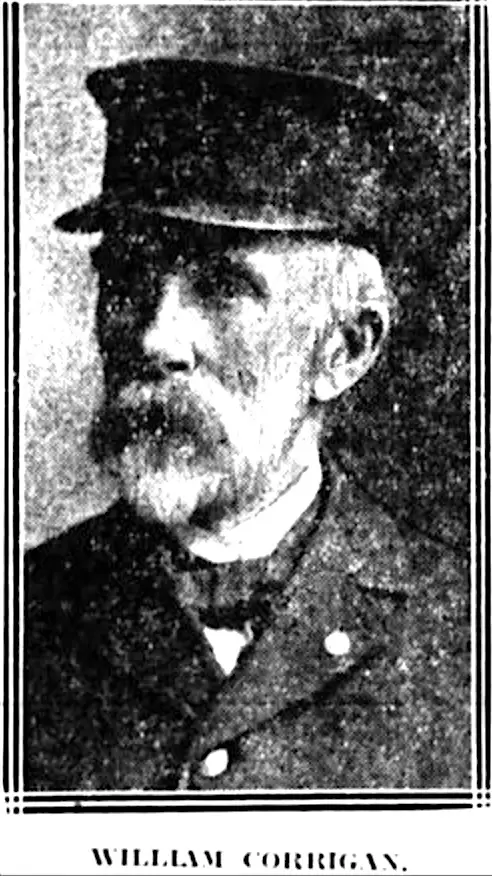COOK, GEORGE (1841-1897). Corporal, 103rd New York Infantry, Companies D and C. Originally from England, Cook enlisted on February 24, 1862, at New York City, as a private. He mustered into Company D of the 103rd New York Infantry on that same day. He re-enlisted into the same company as a private on February 27, 1864, and rose to corporal on or about September 15, 1864. On March 14, 1865, he was transferred within the regiment to Company C and was discharged on September 8, 1865. In 1889, his application for a pension, filed under George Koch and indicating an alias of George Cook, was approved, certificate 537,696. His last residence was 406a 18th Street in Brooklyn. His death was attributed to a skull fracture. Although his mother filed for a pension, application 549,039, there is no indication that it was certified. Section 135, lot 27263, grave 293.
Civil War Bio Search
COOK, GEORGE I. (1835-1915). Private, 82nd New York Infantry, Company A. A native of New York City, he enlisted there on May 21, 1861, mustered immediately into the 82nd New York, and was discharged for disability at Washington, D.C., on July 20, 1862. He last resided in Manhattan. Cook succumbed to a cerebral thrombosis. Section 83, lot 2451.
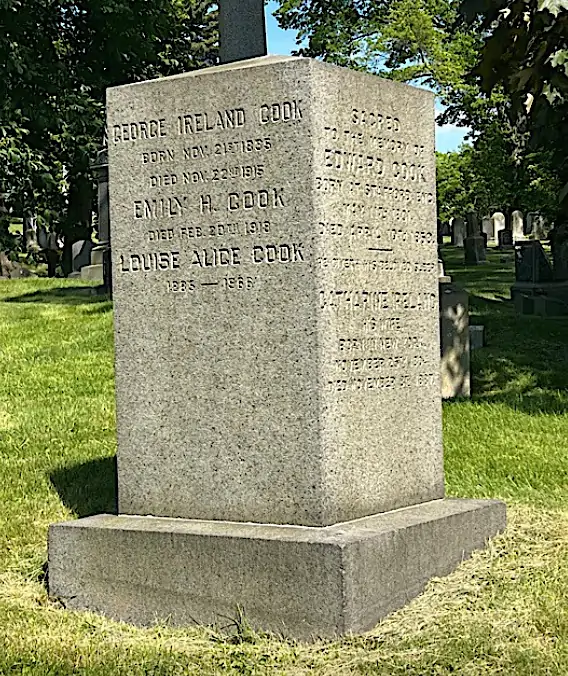
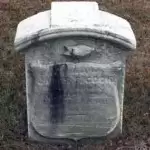
COOK, JAMES B. (1833-1866). Private, 32nd New York Infantry, Company C. Of Irish origin, he enlisted as a private on May 7, 1861, at Johnstown, New York. He mustered into the 32nd New York on May 31, and mustered out after two years on June 9, 1863, at New York City. Cook last lived at 71 10th Avenue in Manhattan. Section 114, lot 8999, grave 976.
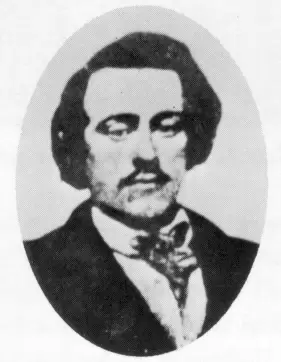
COOK, JOHN E. (1830-1859). Abolitionist and John Brown’s (Kansas) Provisional Army spy. Born in Haddam, Connecticut, he moved to Brooklyn to study law. A follower of John Brown, he went to Kansas in 1855 where he was the only man to reach the rank of captain in the Kansas Provisional Army who wasn’t a son of John Brown. Cook was a master at strategy and was able to help Brown’s Army in many ways. He took part in many raids and actions in Kansas. He was able to do reconnaissance of a town or place, return to Brown with the information and greatly reduce casualties on subsequent missions. He was also successful in raising money for Brown’s Army from abolitionist bankers in New York City and Brooklyn. John Brown sent Captain Cook to Harpers Ferry, Virginia, a year before the raid. (West Virginia became part of the Union in 1863.) Cook took many jobs there including school teacher and river lock-tender, all the time reporting on troop movements, train movement (B&O Railroad), telegraph wire locations, and slave movements through Virginia. Cook repeatedly told Brown that the town was critical to success. Capture the town and you have freedom to move the items you would need from the U.S. Arsenal and escape.
John Brown did not heed the information given him. First, Brown’s raiding party was only 21 men. They did not cut all the telegraph wires and they did not stop the trains from leaving the Harpers Ferry Station. This mistake led to the Federal troops returning in force to put down the raid. They also did not follow Cook’s plan to cut the bridges so the troops came in from there as well. The raiders were forced from the U.S. Arsenal and retreated to a nearby fire station where they were caught or killed. Seven raiders did escape; two of them were John E. Cook and Albert Hazlett. It is not known if Cook took part in the fight for the Arsenal or if he rescued Albert Hazlett and escaped with him.
After the raid, Cook escaped to the mountains of Franklin County, Pennsylvania, where he was hidden by the Underground Railroad. But, after a few days, he came to the Hughes Furnace, looking for food. Unfortunately, that place was managed by a southerner, Dan Logan, who supplemented his income by capturing runaway slaves and immediately recognized Cook. He described Cook, “under medium size, skin as soft as a woman’s, and his deep blue eyes and wealth of blond hair made it easy to identify him.” Though some locals made plans to free Cook from custody (he was captured on October 25, 1859), a Virginia agent arrived the next day and took him back to Charlestown, Virginia. There he signed a statement implicating leading Northern abolitionists in the planning for the raid on Harpers Ferry. When in Charlestown (Jefferson County, Virginia) West Virginia, many people said that John E. Cook was too free with his information on John Brown’s Provisional Army during his trial. He gave the federal court marshal information on every raid from Black Jack and Lawrence, Kansas, and the raid on the United States Arsenal in Harpers Ferry. Many people of his time believed he was the one who hanged John Brown with his testimony. The newspapers called him “The Judas of the Raid.” In late December, Cook attempted to escape from the Charlestown jail, but only got as far as the prison wall in the courtyard and was quickly recaptured. John E. Cook and Albert Hazlett were hanged on December 16, 1859, for their part in the Raid on Harpers Ferry (now West Virginia). Section 115, lot 18004.
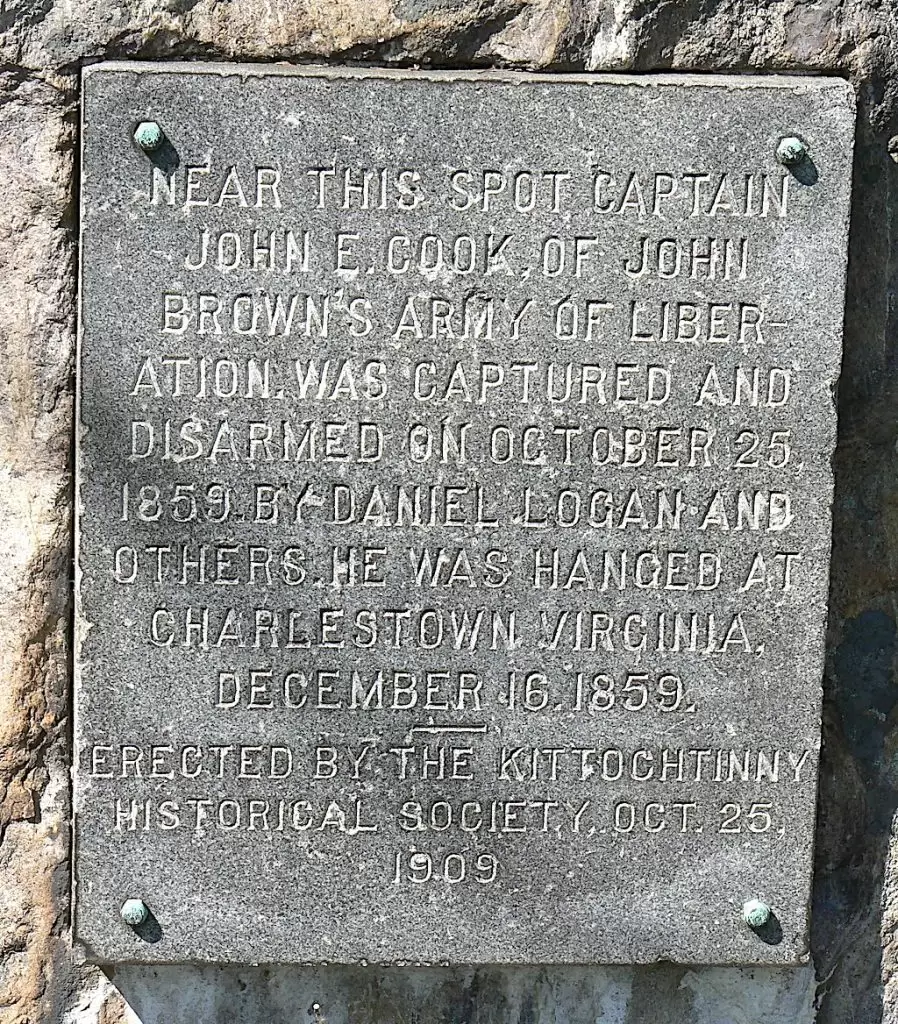
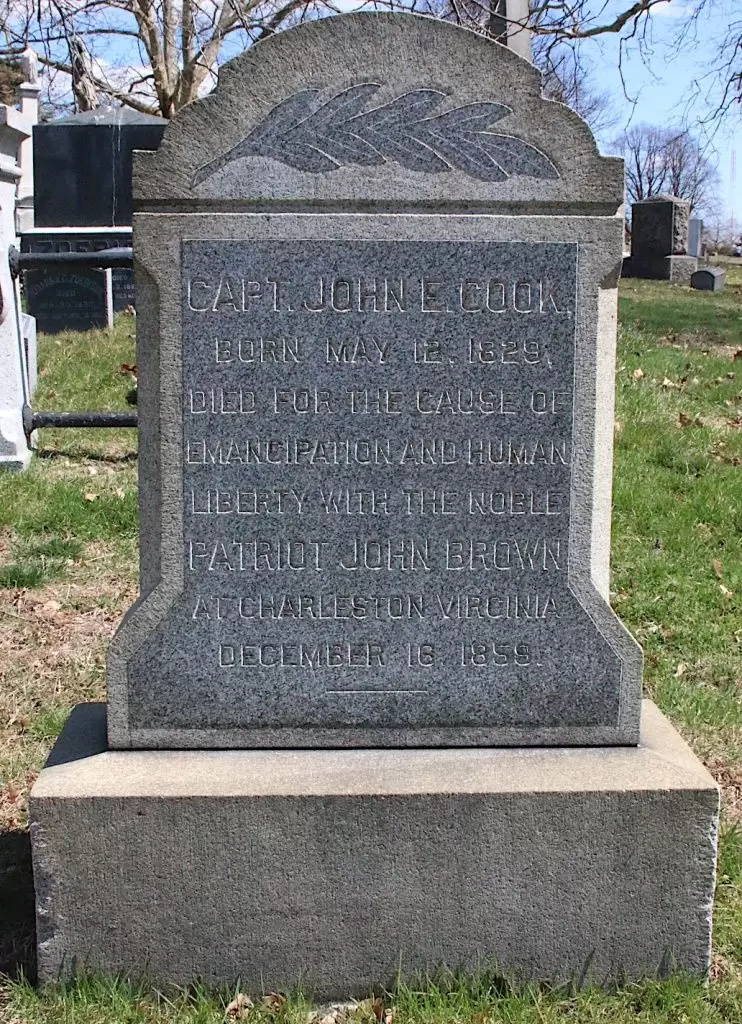
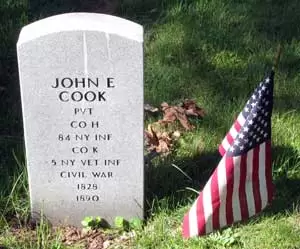
COOK (or COOKE), JOHN E. (1828-1890). Private, 84th New York (14th Brooklyn) Infantry, Company H; 5th New York Veteran Infantry, Company K. A New Yorker by birth, Cook enlisted as a private at Brooklyn on August 27, 1862, mustered into the 14th Brooklyn the next day, and was transferred into the 5th Veterans on June 2, 1864. In 1882, his application for an invalid pension was granted under certificate 424,044. Cook last lived at 620 Pacific Street in Brooklyn. He died from pneumonia. His widow, Susan Cooke, received a pension in 1891, certificate 327,107. Section 2, lot 5499, grave 2212.
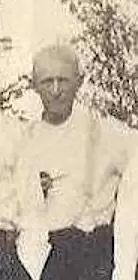
COOK (or COOKE), MICHAEL (or MAPES) MORTIMER (1843-1920). Hospital steward, 29th New Jersey Infantry, Field and Staff. Cook was born in Long Branch, New Jersey. The 1850 and 1860 censuses show that he lived in Long Branch with his parents and siblings. During the Civil War, Cook first served as a private in Company A of the 29th New Jersey Infantry. He mustered out as a hospital steward in the Field and Staff of that same regiment.
As per the 1865 New Jersey state census, he still lived in Long Branch in Ocean County, New Jersey. The 1870 census, which recorded his name as Mapes Cooke, shows that he lived in Washington Point, in Norfolk, Virginia, with Susie Cooke, his wife, and was a farmer. According to the 1880 census, he was a druggist who lived in Sayville, New York, with his wife, Susie, and their four children. At the time of the 1900 census, he was a widower who lived in Harrington, New Jersey, and was employed as a druggist. In 1902, his pension application was approved, certificate 1,045,477. The 1910 census indicates that he was a widower, worked as a druggist in a hospital and lived on Parkwood Boulevard in Schenectady, New York, with his eldest daughter, Blanche Davies, and her family. In 1920, he was retired and still lived with his daughter and her family in Schenectady, New York. Section 30, lot 6481.
COOK, JR., NORMAN R. (1838-1902). Captain, 8th Regiment, New York State Militia, Company E. Together with his brother Robert, Cook enlisted as a private at New York City, mustered into the 8th Regiment, and served for three months in 1861 before mustering out with his company at New York City. Cook’s father, Norman was a captain in the 8th Regiment (date unknown) and was a pioneer in the umbrella business whose establishment, Umbrellas & Parasols, was located at 100 Bowery in Manhattan; that establishment, which dated to the veteran’s grandfather, Richard Cook, who opened the business in 1813, made hand-made umbrellas on its premises. One advertisement promised that its umbrellas with a satina finish, would retain its color in sun or rain, was lighter than alpaca and would not cut like silk. The satina umbrellas were listed in the catalogue of the International Exposition of 1876.
Norman Cook & Son is listed as an umbrella manufacturer in the 1865 New York City Directory; it is possible that he is that son. Upon his father’s death in 1890, the third generation family business relocated to 122 Bowery under the name of Norman Cook’s Son. The establishment was considered a high-class retailer and was known for its dependableness and mail order business. He applied for a pension in 1893, application 1,153,198, but there is no certificate number. Cook’s last residence was 205 East 17th Street in Manhattan. His death was attributed to asphyxia. The umbrella business, which modernized and remained in the family kept its shop on the Bowery until 1910 when it relocated to Astor Place and Broadway. Section 67, lot 2027, graves 12 and 13.
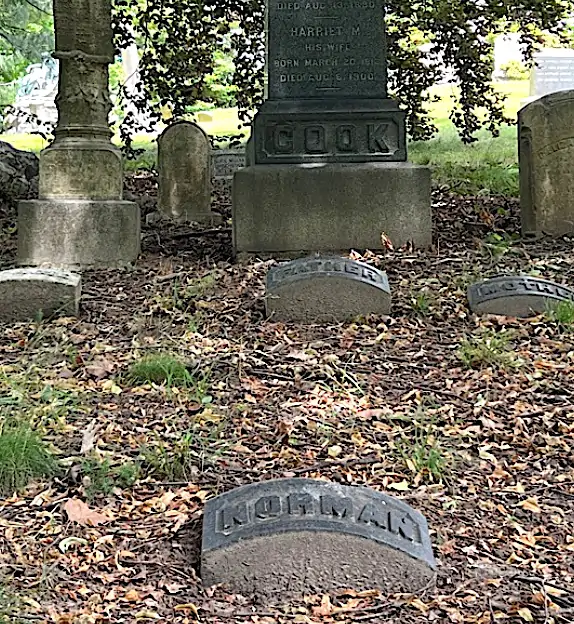
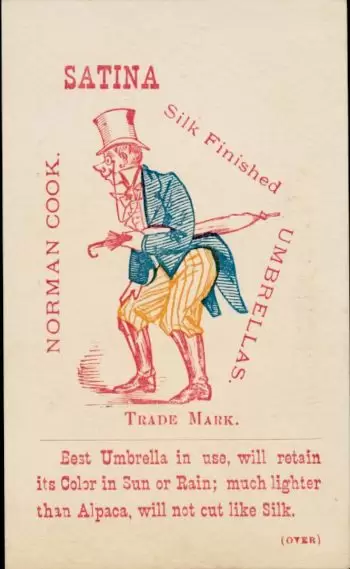
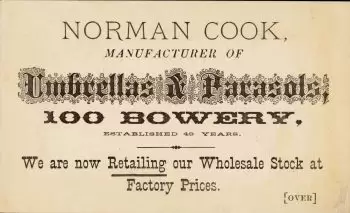
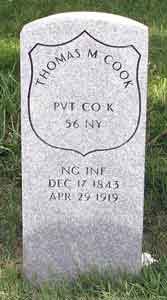
COOK, THOMAS M. (1843-1919). Private, 56th Regiment, New York State National Guard, Company K. Further details of his service are unknown. Section 136, lot 28070, grave 25.
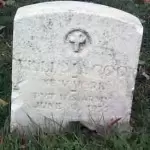
COOK, WILLIAM A. (1842-1935). Private, 71st Regiment, New York State National Guard, Company D. He enlisted at New York City on May 27, 1862, immediately mustered into the 71st New York as a private, and mustered out at New York City after three months on September 2. Section 1, lot 8298.
COOKE (or COOK), EDWARD (1838-1918). Private, 14th New York Infantry, Company K. After enlisting at Huc, New York, on August 29, 1861, he mustered into the 14th that day as a private, and mustered out at Utica, New York, on May 23, 1863. Section 1, lot 8298.
COOKE, WILLIAM JESSUP (1843-1896). Quartermaster, 4th New Jersey Infantry; commissary sergeant, 15th New Jersey Infantry, Company I. William Jessup Cooke was born to Sylvester and Olivia Wade Cooke on December 12, 1843, in Brooklyn, Pennsylvania, according to records from Ancestry.com. As per Presbyterian Church records, he was baptized June 15, 1844, in Sussex, New Jersey. While not much is known about his early years, we know that a nineteen-year-old Cooke enlisted as a private in the 15th New Jersey Infantry in July 1862. By August, he was mustered into Company I.
According to the Register of Officers and Men of New Jersey in the Civil War 1861-65, during his first year in the 15th New Jersey, Cooke served as a commissary sergeant. Commissary sergeants were non-commissioned officers (NCOs) who worked receiving and supplying food to soldiers (A Commissary Sergeant’s Notebook – The Liberty Rules).
By January 1864, William was discharged from the 15th for promotion. At that time, Cooke was transferred to the 4th New Jersey Infantry’s Field & Staff, where he advanced from lieutenant to quartermaster. Typically a quartermaster’s duties during the Civil War would have included providing shelter, transportation, storage, and other functions needed to sustain the soldiers, according to A Brief History of the Quartermaster Corps. There is no record of his date of discharge from the 4th.
Three and one-half years after the Civil War ended, on December 29, 1868, Cooke married Catherine (Kittie) Wardell Platt in New York City. In 1869, William and Catherine welcomed their first child, Fredrick.
By 1870, William and Catherine were living in Georgetown, Washington, District of Columbia, where William worked as a clerk for the United States Treasury Department. From 1870 to 1880, while in Georgetown, their children Catherine Wade, Anna Bushnell, Alice Dodge, and Edith Wardell were born.
The 1880 census shows the Cooke family’s residence as Darnestown, Montgomery County, Maryland, a suburb of Washington, D.C. William’s occupation in that census report is listed as “farmer.” Their last child, Henry (also known as Harry), was born in 1881 in Darnestown.
By 1896 when William was 52 years old, the Cooke family was living in Bloomfield, New Jersey. Cooke died there on October 17, 1896 from tuberculosis. Catherine, his wife, survived him by seventeen years and died in 1913, according to New Jersey’s Star Ledger newspaper listing. She is interred at Green-Wood Cemetery with William. Section 68, lot 1360, grave 15.
COOMBS, JOHN WARREN (1826-1872). First sergeant, 99th New York Infantry, Companies A and D; private, New York Union Coast Guard. Coombs was born in Phippsburg, Maine, another gives Massachusetts as his birthplace. After enlisting as a private at New York City on July 20, 1861, he immediately mustered into the New York Union Coast Guard. On September 1, 1861, he transferred into Company A of the 99th New York as a corporal. He rose to sergeant on June 1, 1863, and was subsequently promoted to first sergeant effective upon his transfer to Company D on an unstated date. He was discharged on July 20, 1864, at New Berne, North Carolina.
As per the Brooklyn Directory for 1867-1870, Coombs had a patent agency at 189 Broadway in Manhattan; during those years, he lived at 156 High Street in Brooklyn. His agency bore the name Brown, Coombs & Co. A patent attorney according to the 1870 census, Coombs was the editor of American Artisan, a weekly journal situated at 189 Broadway in Manhattan, dedicated to promoting the rights of patentees and celebrating inventors. The sixteen page magazine included etchings, information in layman’s language about mechanics, procedures for obtaining patents, and descriptions of new inventions at the cost of $2.50 per year. Information in that magazine noted that the agency helped with obtaining foreign patents, extending trademarks, appealing rejected patent applications and filing for caveats (the opportunity to contest another inventor’s claim to a similar patent made within the year).
Active in fraternal organizations, he belonged to the Freemasons, Knights Templar, and other lodges. He was mentioned in an article in the Brooklyn Daily Eagle on March 8, 1871, noting that he was excused from jury duty after falling in his bathtub and sustaining severe injuries possibly attributed to his large size. He last resided at 437 Bedford Avenue in Brooklyn. Section 186, lot 20609.
COONEY, JAMES (1844-1890). Private, 164th New York Infantry, Company I. Born in England, Cooney enlisted at Brooklyn as a private on August 23, 1862. On November 19, he mustered into Company I of the 164th New York from which he mustered out at Washington, D.C., on July 15, 1865. In 1880, he received an invalid pension under certificate 278,603; however, the document lists the year of death as 1910 which might be an error. According to the Brooklyn Directory for 1888-1889, he was employed as a gunsmith. His last residence was 988 Atlantic Avenue in Brooklyn. Section 14, lot 4969, grave 313.
COOPER, CORNELIUS A. (1826-1862). Captain, 127th New York Infantry, Company C. Originally interred in lot 13414 at Green-Wood, his remains were removed from the cemetery on October 28, 1868. Born in New York, Cooper enlisted at New York City on August 30, 1862, was commissioned into the 127th on September 10, and died of typhoid fever on November 25, 1862, at Upton’s Hill, Virginia.
COOPER, EBENEZER B. (or EDWARD A.) (1833-1890). Private, 11th New York Infantry, Company E; 112th Infantry, Company I. According to the census of 1850, Cooper was a maker of window sashes and paneled doors. After enlisting at New York City on April 20, 1861, he mustered into the 11th New York on May 7, and deserted on August 1 at New York City. His pension record indicates that he also served as a private in the 112th New York as Edward A. Cooper. The 1870 census states that he was still employed as a sash maker. He applied for an invalid pension in 1878, application 209,381, but there is no evidence that it was certified. He last resided in Brooklyn. In 1890, Harriet (or Hannah) Cooper applied for and received a widow’s pension, certificate 383,494. Section 19, lot 8229.
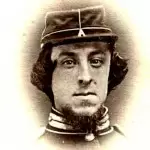
COOPER, EDWARD C. (1837-1862). Second lieutenant, 9th New York Infantry, Company C. A resident of Bethune, New York, Cooper enlisted as a sergeant at New York City on May 4, 1861. That same day, he mustered into Company C of the 9th New York Infantry, also known as the Hawkins Zouaves, and was promoted to quartermaster sergeant. He was promoted to second lieutenant on November 23, 1861, and saw action in North Carolina at Roanoke Island, Camden, River Bridge, South Mills, and Rainbow Bluffs. In July 1862, the 9th moved to Virginia and joined the Army of the Potomac. Cooper’s Company C was on the picket line the night of September 16, 1862, at Antietam, Maryland, and rejoined the regiment the next morning. When the 9th came under heavy artillery fire, they had to change position, crossing Antietam Creek later that day and forming a line of battle. They pushed back the Confederate skirmishers and eventually hit the main Confederate line. Cooper was killed when the 9th charged forward under heavy artillery fire with their “wild huzzah.” The regimental commander wrote in his report, “We have to lament the death of Second Lieutenant E. C. Cooper, who was wounded just as we commenced the charge. He thought the wound a light one and refused to be carried from the field. He was a good officer, a brave man, and a gallant soldier and much beloved, and his loss is deeply regretted by the regiment.” Burial at Green-Wood was on October 2 of that year. Section 56, lot 6844.
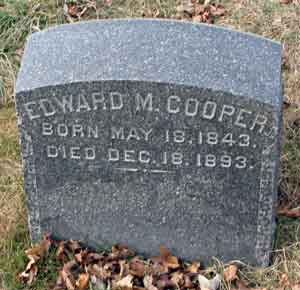
COOPER, EDWARD M. (1843-1893). Private, 1st New York Marine Light Artillery, Company A; landsman, United States Navy. Cooper, who was born in New York State, was employed as a boatman in Sag Harbor, Long Island, according to the census of 1860. He enlisted on October 29, 1861, at New York City, as a private. That same date, he mustered into Company A of the New York Marine Light Artillery from which he was discharged at New Berne, North Carolina, on January 21, 1863. According to his pension record, he transferred to the Navy as a landsman and served on the USS Grand Gulf and the USS Vermont. The Veterans Schedule of 1890 confirms his service in the Marine Light Artillery.
Although Cooper applied for an invalid pension in 1892, application 1,094,827, he apparently died before it was certified. He died on the way to work; he was found slumped against a stoop on Chambers Street in Manhattan and by the time medical help arrived he was dead. An obituary in the Sag Harbor Corrector concluded with the following, “…Edward jr., for many years, worked in the Flouring Mills of this village where he was a steady and faithful employ. He was in the Navy on the Union side, in the war of the Rebellion. He afterward went to the metropolis and engaged in mercantile pursuits….We remember him as an old neighbor, a pleasant friend, a cheerful upright and industrious-citizen.” His last residence was at 615 Halsey Street in Brooklyn. Section 127, lot 17931, grave 9.
COOPER, GEORGE CAMPBELL (1840-1895). Private, 7th Regiment, New York State National Guard, Company G. A Brooklynite by birth, he was educated at New York City’s public schools and was a graduate of the New York Academy, later known as the College of the City of New York. Studying law before he enlisted, Cooper joined the 7th Regiment for 30 days in 1863 and went to the front. He was a member of Delta Kappa Epsilon, which noted that he graduated from Columbia Law School in 1864, was admitted to the New York State Bar that year, and confirmed that he served in the military in 1863.
After the Civil War, he was associated with the Peter Cooper Glue Factory, a family business; that firm also made gelatin among other products. (The namesake, Peter Cooper, was the founder of Cooper Union in 1859 and the man who engineered the first practical steam engine.) In 1865, the glue factory, the largest in the United States, was sold to Peter Cooper’s son, Edward (who was mayor of New York City in 1879-1880 and who is also buried at Green-Wood in the same lot as his father), Cooper’s agent and their children for $200,000. George C. Cooper, whose family relationship to Peter Cooper is unknown, is listed as a glue manufacturer at Maspeth and Gardiner Avenues in the Brooklyn Directories for 1867-1870, 1873-1876 and 1880-1882; in the latter directories, the firm was also at 17 Burling Slip in the New York City. He died at his home at 113 East 21st Street in Manhattan. Ultimately, the glue factory was shut down in the early 1900s for violating environmental laws and was torn down in 1915. Section 29, lot 9603.
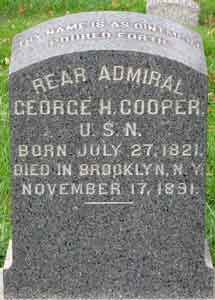
COOPER, GEORGE H. (1821-1891). Commander, United States Navy. Cooper was born in New York State. His grandfather, Samuel Cooper, who had the rank of major in the Continental Army during the Revolutionary War, handed down his membership in the Society of the Cincinnati to his grandson. He remained a member of the Massachusetts chapter of this elite organization throughout his life. On August 4, 1837, Cooper became a midshipman in the United States Navy and was attached to the fleet off the coast of Florida where he engaged in expeditions against the Seminole Indians. He was then assigned to the Constitution in the Pacific Squadron from 1839-42, attended the Philadelphia Naval School in 1843, was promoted to passed midshipman on June 29, 1843, and was in the Home Squadron from 1846-47, during which time he reported to General Zachary Taylor in March 1846 and participated in the Mexican-American War at battles at Point Isabel, Texas, and Monterey, Tabasco and Alvarado. Subsequent to his assignment on the receiving-ship Norfolk from 1847-48, he was at the Naval Station at Norfolk, Virginia, from 1849-50. He was promoted to master on October 11, 1850, received his commission as a lieutenant on May 8, 1851, and then went to the East India Squadron from 1850-55.
After returning to Norfolk for ordnance duty in 1857, he was attached to the frigate Roanoke in the Home Squadron from 1859-60, and was assigned to the Navy Yard at Portsmouth, New Hampshire, in 1861. Cooper was promoted to commander on July 16, 1862, and took charge of the steamer Massachusetts, a supply vessel, in the Atlantic Squadron. He was then at the helm of the Mercedita in the South Atlantic Blockading Squadron in 1863. While commanding the Sangamon off Charleston Roads, South Carolina, he participated in the shelling of Fort Sumter and Sullivan’s Island, then was in charge of the Sonoma in the South Atlantic Blockading Squadron during 1863-64. Cooper relocated to Eastern Gulf Blockading Squadron in 1864-65 where he commanded the Glaucus.
The Brooklyn Directories for 1865 and 1868 list him as being in the United States Navy; his home address was at 45 Ryerson Street. After the War, he was commander of the Winooskie from 1866-67, received a promotion to captain on December 2, 1867, and then served at the Norfolk Navy Yard until 1869. Cooper participated in the Korean Expedition of 1871, the first military action there, after an unsuccessful attempt to establish trade and political relations. On June 5, 1874, he was promoted to commodore and rose to rear admiral on November 15, 1881. On May 23, 1883, he commanded five ships from the North Atlantic Squadron when they were in the East River of New York City for the opening of the Brooklyn Bridge. The ships joined the Navy Yard and other nearby military installations in firing a salute to the new bridge. He was added to the retired rolls on July 27, 1884, after 54 years of service. Although offered a full military funeral and honors by the Society of the Cincinnati, he opted for a private service prior to his burial. His last residence was 650 Halsey Street in Brooklyn. Section 166, lot 28117, grave 2.
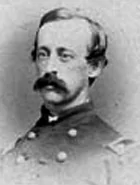
COOPER, HENRY C. (1829-1893). Captain, 7th New Jersey Infantry, Company E; surgeon, 3rd New York Merchants Brigade; Blair Rifles; 178th New York Infantry. A resident of Phillipsburg, New Jersey, he was the nephew of Peter Cooper, the famed philanthropist and founder of Cooper Union. H may be the Henry C. Cooper listed as a physician in the 1857-862 Brooklyn Directory. He entered service as a captain on September 18, 1861, when he was commissioned into Company E of the 7th New Jersey Infantry, and resigned on May 27, 1862. He re-enlisted at New York City as a surgeon on November 29, 1862, was commissioned into the 3rd Merchants Brigade on December 1, 1862, was transferred to the Blair Rifles on April 21, 1863, and mustered out on June 20, 1863.
His service resumed when he was commissioned into the Field and Staff of the 178th New York on July 1, 1863, the same day he was promoted to assistant surgeon. During his tour of duty, he was taken as a prisoner of war on July 15, 1864, at Old Town Creek, Mississippi, paroled on September 1, 1864, and promoted to surgeon on April 11, 1865. Cooper mustered out on April 20, 1866, at Montgomery, Alabama. He applied for and was granted an invalid pension in 1886, for disability resulting from dysentery during his imprisonment at Libby Prison (Richmond, Virginia) in 1864, certificate 316,382.
After the War, he lived in Bergen Township, New Jersey. He is the Henry C. Cooper who is listed as a secretary at 18 Burling Slip in the 1885-1886 New York City Directory and at 18 Wall Street in the New York City Directory for 1891-1892; that man lived in Carlstadt, New Jersey, the hometown indicated in this man’s obituary. His obituary in the New York Herald, which noted that he was a physician and his relationship to Peter Cooper, stated that carriages would meet the train for his funeral service. In 1894, Mary A. Cooper, who is interred with him, applied for and received a widow’s pension, certificate 400,460. Section 56, lot 6844.
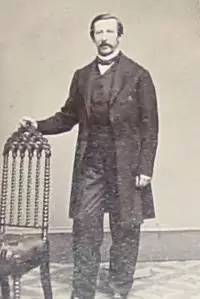
COOPER, JOHN B. (1836-1918). Private, 79th New York Infantry, Company H. Enlisting as a private at New York City on May 13, 1861, Cooper, a Brooklyn native, mustered into the 79th New York on May 28, and deserted at Georgetown, D.C, a month later on June 25. His last residence was on Parkville Avenue in Brooklyn. Section 153, lot 22640.
COOPER, MASON SINCLAIR (1847-1891). Acting ensign, United States Navy. Born in Portsmouth, Virginia, Cooper entered the United States Navy as a mate on May 6, 1864. He was promoted to acting ensign on April 7, 1865, and honorably discharged on October 3, 1866. After the War, he entered the Pacific mail service and was captain of several of the company’s vessels that cruised off the coasts of Japan and China. After 14 years, he returned to the United States and was a customs inspector in New York for two years.
When an insurrection threatened Haitian President Solomon, Cooper was asked to take over the Haitian Navy with the rank of admiral, a position he accepted. Despite being wounded seriously in the leg, he was successful in quelling the insurgency. After spending five months in the hospital, he remained as head of the navy there for six years until Solomon was deposed and he was forced to seek American protection to secure his trip home. He declined to return to Haiti when President Hippolyte offered him the position as admiral of the navy.
Cooper was a member of the William Rankin Post #10 of the G.A.R. As per his obituary in the New York Herald, which confirms his Civil War service and role in Haitian Navy, he had been recently commissioned by Senator George Hearst of California to superintend the building of Hearst’s yacht at Providence, Rhode Island. He was living at 88 Clinton Avenue in Brooklyn at the time of his death. The pastor of the Lafayette Avenue Presbyterian Church conducted his funeral service. Section 105, lot 3521.
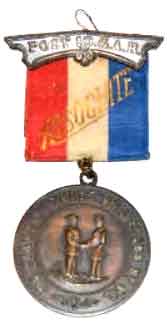
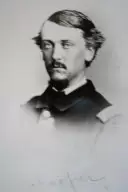
COOPER, POINSETT (1836-1895). Assistant inspector general, United States Volunteers; captain, 42nd New York Infantry, Company D; second lieutenant, 82nd New York Infantry, Company G; private, 7th Regiment, New York State Militia, Company F. Cooper was born in New Haven, Connecticut. He was listed as a clerk in the Brooklyn Directory for 1857-1862; during those years, he lived at 146 Hicks Street. He enlisted as a private at New York City on April 17, 1861, mustered into the 7th Regiment on April 26, and mustered out with his company at New York City on June 3 of that year. As per his muster roll, he was a bank clerk who was 5′ 8″ tall with light complexion, blue eyes and light hair. He re-enlisted as a second lieutenant at New York City on October 22, 1861, was commissioned into the 82nd on that day, and was discharged on January 10, 1862. On March 18, 1862, he returned to service at New York City when he enlisted as a first lieutenant and was immediately commissioned into the 42nd New York. In the first of numerous wartime injuries and illnesses, he was listed as suffering from debility from July 4, 1862, until July 10 when he returned to duty.
Cooper fought in many of the battles of the Civil War including Ball’s Bluff, the siege of Yorktown, Fair Oaks, Savage Station, Malvern Hill, Second Bull Run, Fredericksburg, Bristoe Station, the Wilderness (all in Virginia); Antietam, Maryland; and Gettysburg, Pennsylvania. He was wounded in the foot at the Battle of Antietam on September 17, 1862. On November 12, 1862, he was promoted to captain. On April 18, 1863, he was suffering from chronic diarrhea and on May 13 from inflammation of the urethra. In July 1863, he was detailed as acting inspector general of the 1st Brigade, 2nd Division, 2nd Corps and served in that capacity from August 1863 (when he was detailed to the 3rd Brigade, 2nd Division, 2nd Corps) through March 1864.
After being injured by a Minie ball that caused a contusion to the right hip at the Battle of Bristoe Station, Virginia, on October 14, 1863, he was furloughed until October 16. On May 5, 1864, while commanding the 42nd New York, he was shot in the right leg above the ankle, at the Battle of the Wilderness, Virginia, the ball grazing the tibia. The bullet was subsequently removed. He was sent to the temporary field hospital where he remained for two days before being evacuated with other wounded to Fredericksburg, Virginia. According to the deposition of Captain Robert C. Wright, who was wounded in the same battle, “while on our way to Belle Plains, the ambulance was attacked by guerrillas and said Poinsett Cooper was shot in the neck, the bullet lodging in the shoulder…[I know] this from personal knowledge having lit a match immediately after he was shot to see where he was wounded and saw the wound on the side of the neck…the ball poking out through the shoulder.” At Fredericksburg, they stayed at a house used by the 2nd Corps as a hospital. In a day or two when communications were opened, Cooper was sent to Alexandria, Virginia. He arrived on May 12, staying at the 1st Division General Hospital for about two days, until his friends obtained permission to take him home to New York City. He mustered out with his regiment, at New York City on July 13, 1864, at the expiration of its term of service.
After the Civil War, Cooper lived in Brooklyn, and later in Manhattan. In 1871, he applied for and was granted a ¾ invalid pension, certificate 117,435, the examining physicians finding him suffering from impaired locomotion from the leg wound, “catching pain” upon respiration, and a weakening of the arm on the left side and the deltoid, where the bullet was still lodged, having entered just above the Adam’s apple and passed through his body. In 1879, he applied for and received compensation owed retroactive to 1864 under a new pension law. The 1883 Roll of Pensioners from New York County lists him as receiving $15.00 per month for injuries to his right leg and throat.
As per the New York City Directory for 1882-1883 and the Brooklyn Directory for 1885-1885, he worked in express (expressmen ensured the packing and delivery of cargo on the railroad). His obituary in the New York Herald noted that members of the Military Order of the Loyal Legion, a patriotic organization of Civil War Union officers, and members of the Society of War Veterans of the 7th Regiment were requested to attend his funeral. Cooper’s last address was 213 West 131st Street, Manhattan. In 1895, his widow, Lillie W. Cooper, applied for and received arrears due on her husband’s pension, which had not been paid since November 1894, application 615,767. Section 122, lot 3962, grave 13.
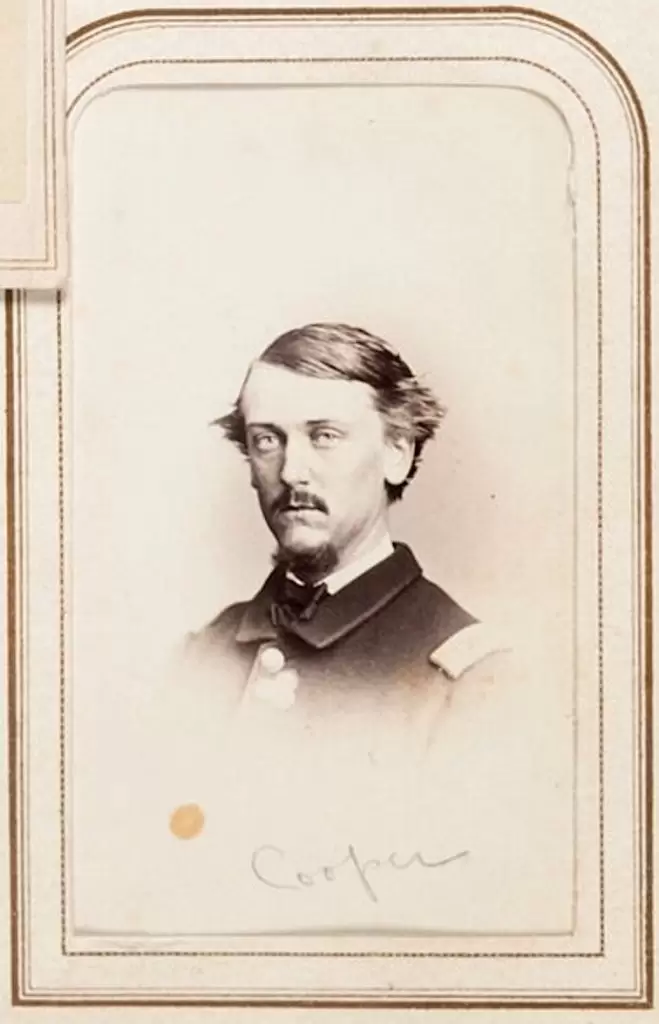
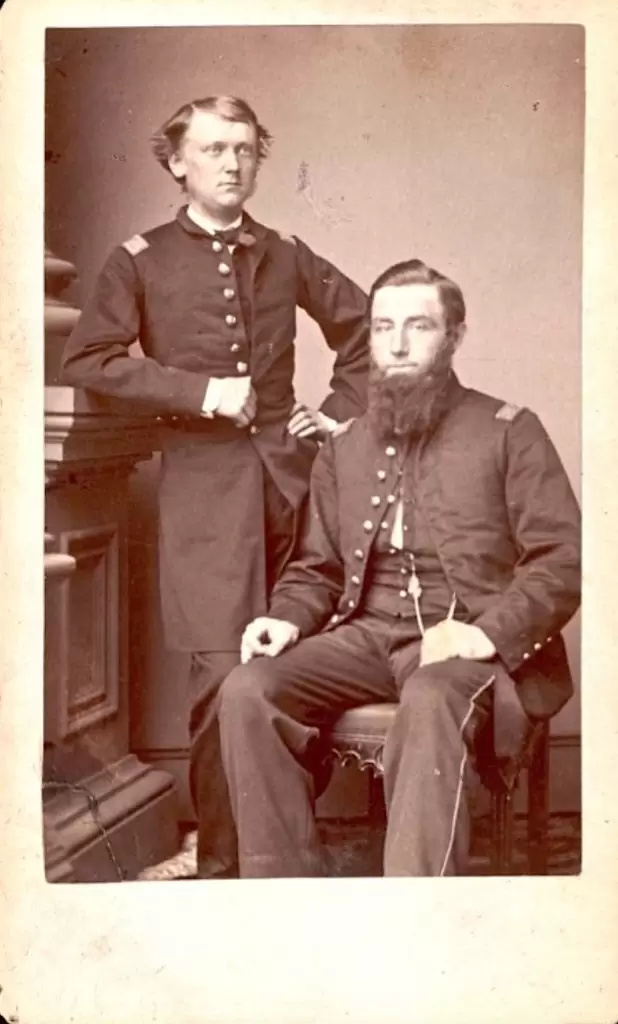
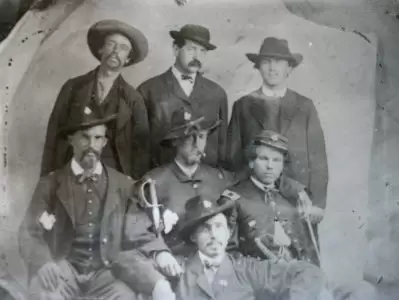
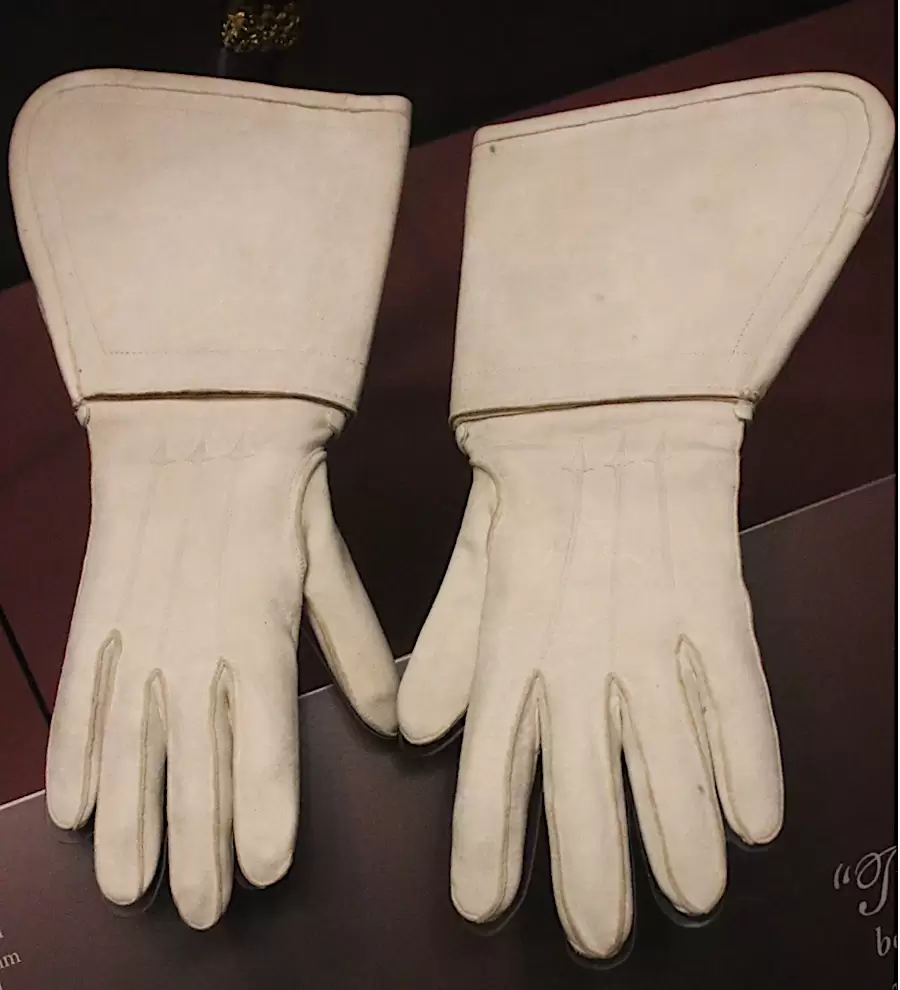
COOTEY, PHILIP I. (1832-1911). Colonel by brevet; captain, 5th Massachusetts Infantry, Company F; corporal, 44th Massachusetts Infantry, Company C. Cootey, a native of New York State, attended Harvard College where he studied medicine. It is unclear whether he was a graduate since his occupation at the time of his enlistment(s) was that of clerk and salesman. He enlisted as a private at Boston on August 29, 1862, and mustered into Company C of the 44th Massachusetts. He was promoted to corporal on May 31, 1863, and mustered out on June 18, 1863, at Readville, Massachusetts. Subsequently, he returned to Boston where he organized the 5th Massachusetts. He re-enlisted as a private on July 12, 1864, was commissioned into Company F of the 5th Massachusetts four days later, held the rank of captain at some point, and mustered out on November 15, 1864, at Readville. According to his obituary in The New York Times, Cootey was brevetted to colonel for meritorious service while serving in General Grant’s army.
After the war, Cootey was chaplain of the War Veterans and Sons’ Association in Brooklyn. According to the census of 1880 and his New York Times obituary, he was employed as a builder. He is listed as a contractor in the Brooklyn Directory for 1870-1873. From 1871-72, he was a speculator and builder in Park Slope, Brooklyn, on Seventh Avenue between St. John’s Place and Lincoln Avenue, went bankrupt after the Panic of 1873, but later recovered at the end of the decade. The Brooklyn Directories of 1880-1882, 1888-1890, 1896-1898 and the censuses of 1900 and 1910 list his occupation as architect. The Veterans Schedule of 1890 confirms his military service. In 1904, he applied for and was granted a pension, certificate 1,099,080. He last lived at 10 Spencer Place in Brooklyn. In 1912, Harriet Cootey applied for and received a widow’s pension, certificate 738,594. Section 196, lot 28686, grave 3.
COPCUTT, HENRY (1835-1874). Captain, 9th New York Infantry, Company I. Copcutt was born in England. The New York City Directory for 1860 lists him as an engraver at 297 Spring Street. After enlisting as a captain at New York City on May 3, 1861, he was commissioned into the 9th New York the next day and was discharged on August 12 of that year at Newport News, Virginia. A master engraver, his work depicting soldiers and their families illustrated the sheet music to “Tramp, Tramp, Tramp, the Prisoners Hope,” by George F. Root, a Civil War marching song. Other Copcutt engravings depicted New York City’s Tammany Hall and Buckley’s Theater on Broadway. The engravings are sometimes credited as Copcutt-Williams. His detail of period fashions appeared on magazine covers. He last resided at 114 Christopher Street in Manhattan. Section 65, lot 1509, grave 43.
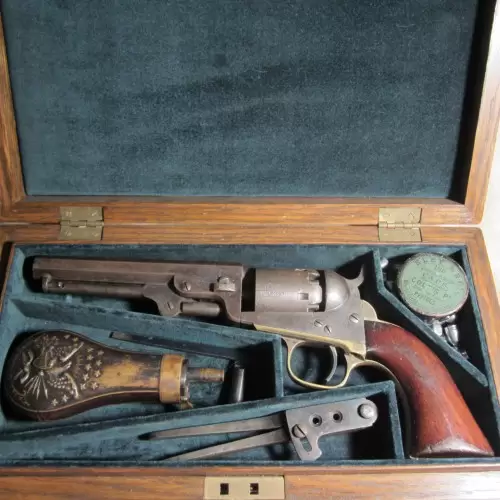
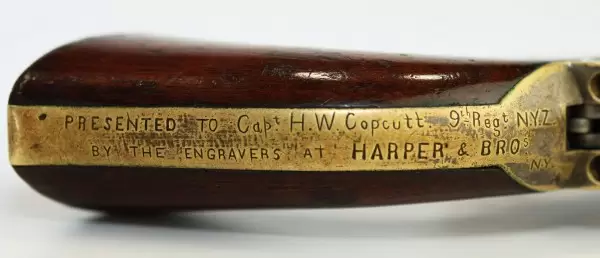
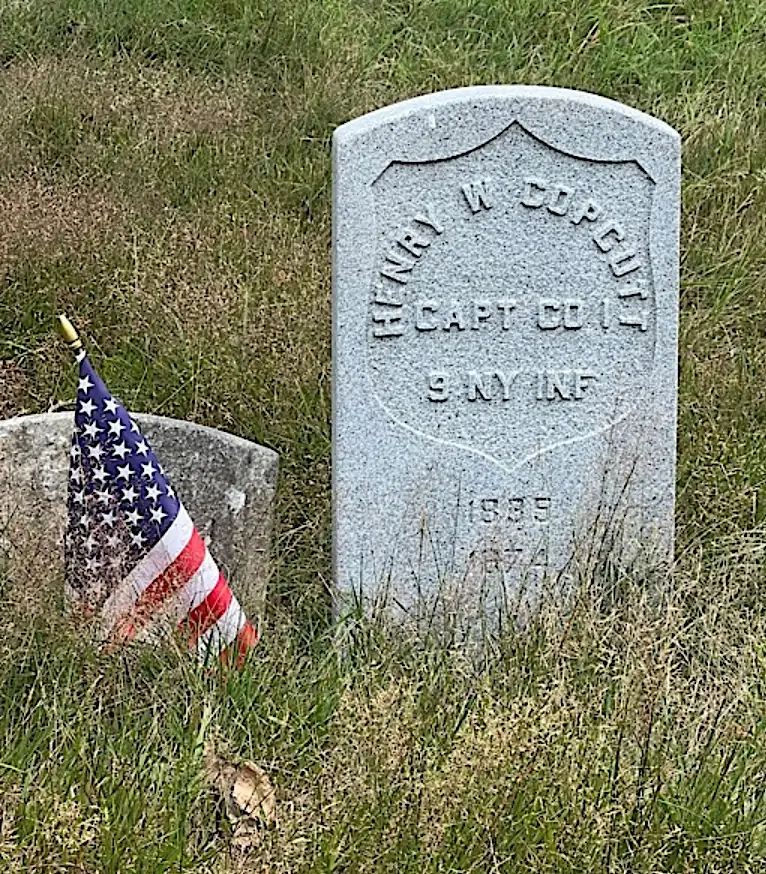
COPELAND, CHARLES W. (1815-1895). Naval engineer. Born in Coventry, Connecticut, he was trained by his father in steam engine and boiler fabrication, then was educated at Columbia College. He was appointed superintendent of the West Point Foundry Association, and there designed the machinery for the Fulton, the first steam war vessel to be constructed by the U.S. Navy. In 1839, the United States government appointed him naval engineer, and in the ensuing years he designed machinery for the Mississippi, Missouri, and other ships. From 1850 until 1860 he was the superintendent of the Allaire Works in New York City, and there designed and supervised the construction of many merchant steamers, including two which shattered transatlantic records for the Collins Line. During the Civil War, he worked to adapt merchant steamers for blockade service. He served as a construction engineer with the U.S. Lighthouse Board 1865-1895. Section 108, lot 415.
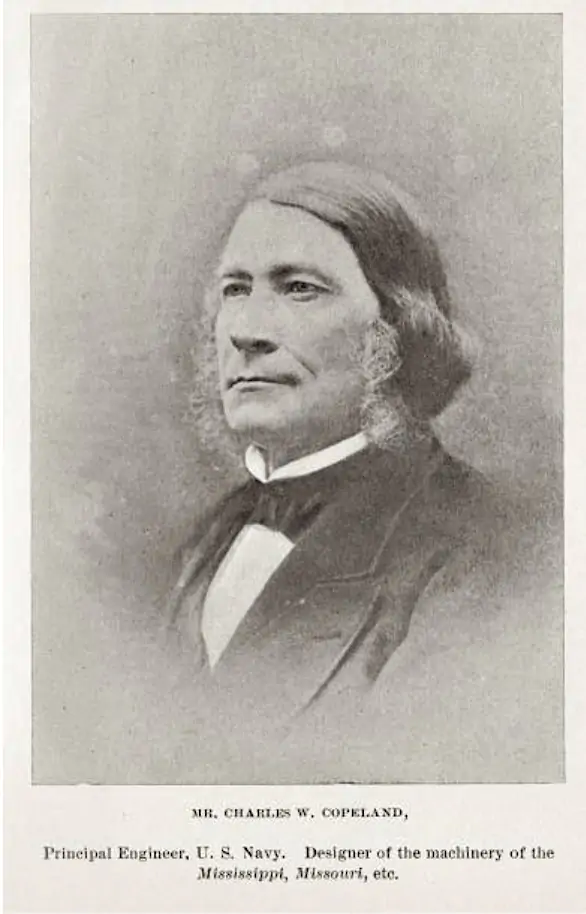
COPELAND, JOHN C. (1834-1903). Second lieutenant, 13th Regiment, New York State National Guard, Company A. He enlisted as a sergeant on April 23, 1861, in his native Brooklyn, and mustered into Company A of the 13th Regiment, New York State Militia, on May 16. His promotion to first sergeant on July 8, 1861, ended on July 22, when he was reduced to the rank of private, mustering out at Brooklyn on August 6, 1861. On May 28, 1862, he was commissioned as a second lieutenant into the same company, then part of the 13th National Guard, mustering out at Brooklyn on September 12. He served again the next year, commissioned in on July 21, 1863, rank not given.
According to the census of 1870, he was employed as a store clerk and living in Brooklyn. By 1880, census data show that he moved to Bridgeport, Connecticut, and worked as a dry goods merchant, and in 1900, he was a retired merchant in Hocking, Ohio. In 1901, he applied for and was granted an invalid pension, certificate 1,037,542. He last lived in Brooklyn. Ellen (or Eleanor) A. Copeland applied for and received a widow’s pension in 1908, certificate 558,171. Section 82, lot 3425.
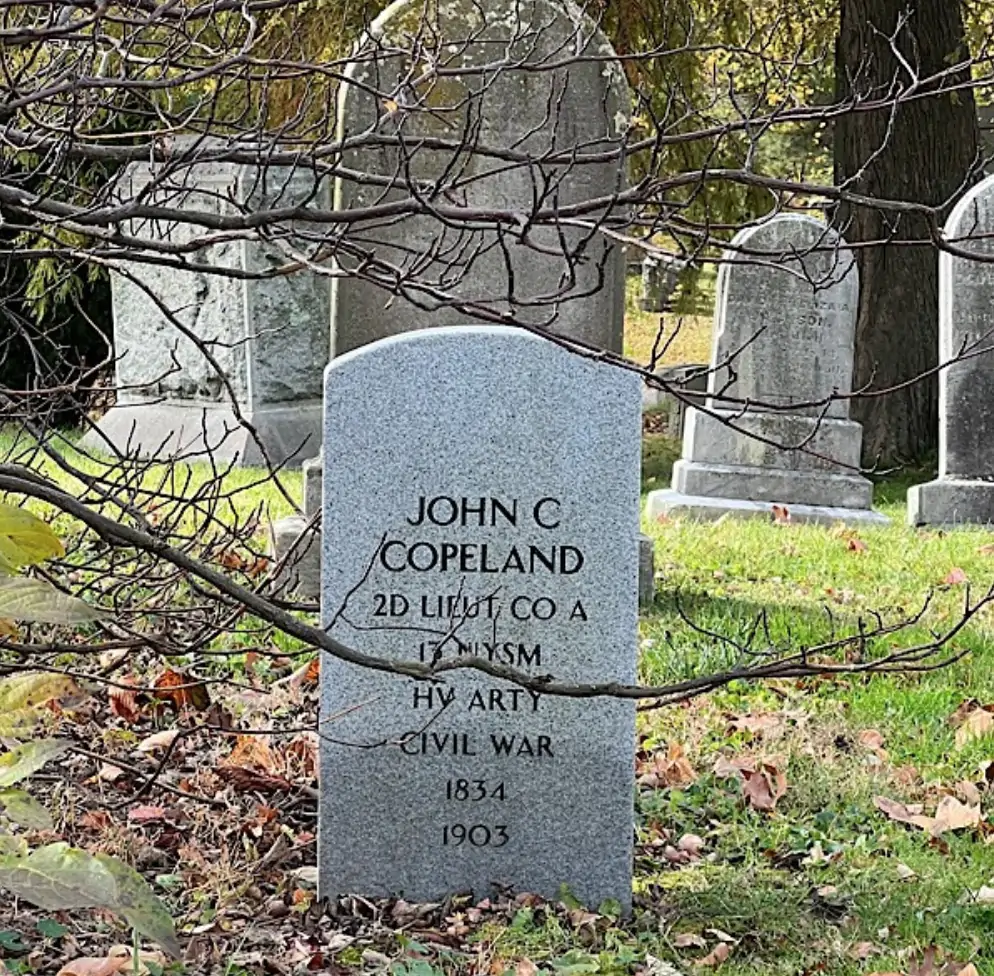
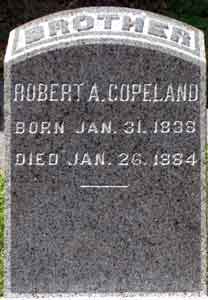
COPELAND, ROBERT A. (1838-1884). First lieutenant, 13th Regiment, New York State Militia, Company A. A native of Ireland, he enlisted as a private at Brooklyn on April 23, 1861, mustered into Company A of the 13th New York State Militia on May 16, 1861, and was promoted to first sergeant on July 22, 1861. He mustered out at Brooklyn on August 6, 1861. On May 28, 1862, he was commissioned into Company A of the 13th Regiment (Heavy Artillery) as a first lieutenant and mustered out at Brooklyn after three months on September 12. He was commissioned as a first lieutenant into Company A of the New York National Guard in 1863, served 30 days, and mustered out on July 21, 1863. He lived at 169 Park Place in Brooklyn at the time of his death. Section 140, lot 24528.
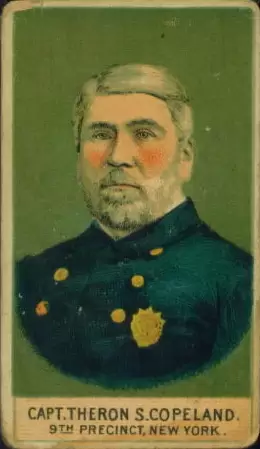
COPELAND, THERON S. (1831-1905). Adjutant, 133rd New York Infantry. Born in Albany County, New York, his family moved to New York City when he was four. A brass molder by trade, he joined the American Rifles (which later became the 71st Regiment) on June 18, 1851, and was awarded gold medals in 1859 for “meritorious services,” and “superior marksmanship with the rifle.” He studied military tactics at a military academy and spent much of his career utilizing those techniques as a drillmaster. In 1855, he joined the Metropolitan Police Department as a patrolman, rose to roundsman in July 1857, and became a sergeant in March 1858.
At the onset of the Civil War, he was detailed by the Board of Police to instruct the force in military tactics. In 1862, Copeland was sent to Riker’s Island, Manhattan, with 350 police officers to suppress a military insurrection there among military recruits. (Over 1,000 recruits were stationed there, many for weeks, and were not as yet sent to the frontlines.) He also quelled disturbances in Staten Island, and Tarrytown, New York. Copeland enlisted at New York City on August 14, 1862. On September 24, he mustered into Field and Staff, 133rd New York Infantry, as an adjutant, and was asked to organize the regiment, also known as the 2nd Metropolitan Regiment, a duty which he performed for 30 days.
He re-joined the New York Police Department, rising to captain in 1862 and was commended for his work as drill-officer in putting down the New York City Draft Riots in July 1863 under Inspector Daniel C. Carpenter, “His conduct elicited the hearty encomiums of his superior officers, and he was not only valuable because of his military knowledge, and the promptness and ability with which he formed commands, but also as a cool, gallant and faithful officer.” He was also praised for displaying “valor and intelligent service” during the riots.
After the Civil War, he was honored for his role in putting down the Orange Riots in 1871. He is listed as a member of the police in the New York City Directories for 1874-1875, 1876-1878, 1882-1883, 1884-1885 and 1886-1886; as of the 1876 directory, he lived at 34 Barrow Street. Copeland was a member of Lafayette Post #140 of the G.A.R., and a charter member of the Veterans Association, 71st Regiment. At the time of his retirement in 1903, he was a captain who served the Police Department for 41 years. His obituary in The New York Times indicates that members of the Veterans of the 7th Regiment, New York National Guard, attended his funeral; he may have served in the 7th, but no record of that service has been found. He died at his residence, 84 Barrow Street, Manhattan. He was survived by his second wife, Rosetta Ann Copeland, and eleven of his fifteen children; his first wife, Susan Huffman Copeland, died in 1869. Section 203, lot 22785, grave 3.
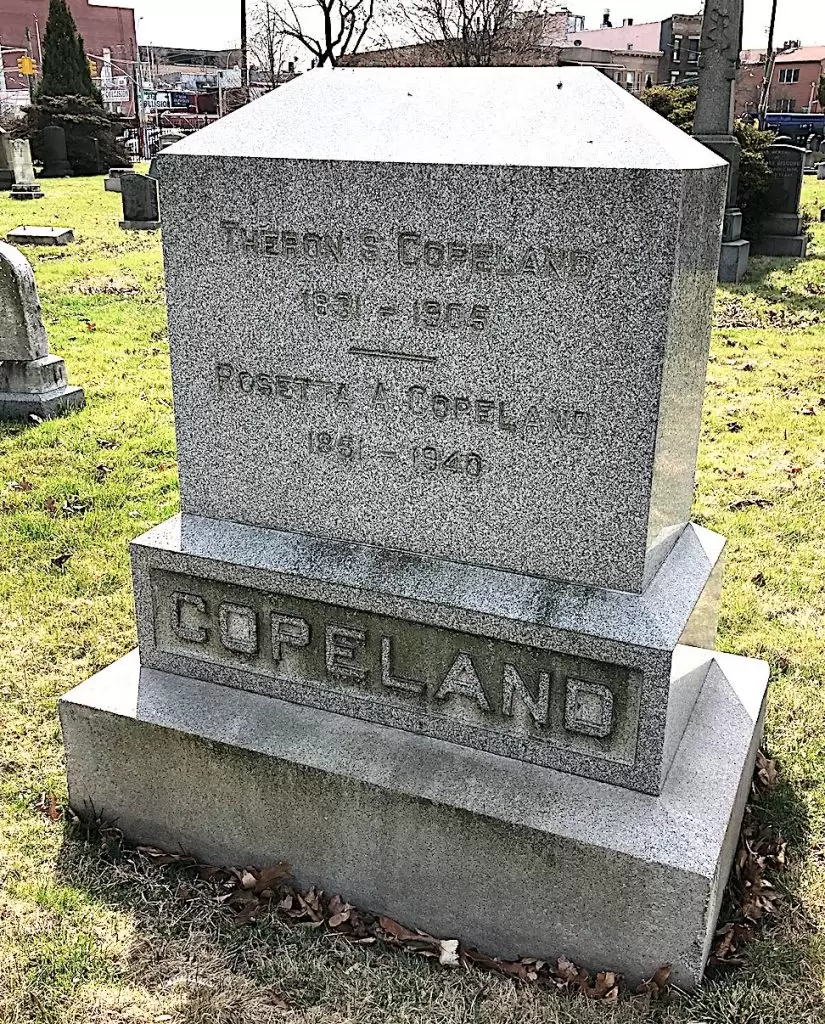
CORBIN, JOB (1834-1915). Surgeon, United States Navy. Corbin, who was born in South Hero, Vermont, graduated from Vermont University in 1858, and received his medical degree there the following year. He then studied from 1859-1861 at Kings County Hospital in Brooklyn. At the onset of the Civil War, he enlisted in the United States Navy as an assistant surgeon on May 9, 1861, and was promoted to assistant surgeon on October 26, 1863. He served on the USS Savannah and the USS Monitor in 1863 and then was at the Naval Hospital in Chelsea, Massachusetts, until February 9, 1864, when he was ordered to the USS Onondaga. He was promoted to surgeon on March 9, 1864, and then joined the USS Iroquois prior to October 1865 when that vessel returned to the Brooklyn Navy Yard after being part of an unsuccessful effort to capture the CSS Shenandoah. On January 31, 1866, he was commissioned to the USS Idaho where he served until he resigned his commission on May 6, 1867.
On May 13, 1867, he married Marie Louisa Weaver in Manhattan. After his service, Corbin lived in Brooklyn where he established his medical practice. He was a member of the Military Order of the Loyal Legion and numerous medical societies. A death notice by the Loyal Legion in the New York Tribune acknowledged his Civil War service in the Navy and invited its members to attend Corbin’s funeral. His last address was 296 McDonough Street, Brooklyn. Burlington, Vermont, newspapers were asked to print a notice of his death. A widower at the time of his death, he was survived by four daughters and three sons; his wife died in 1909. Section 122, lot 1535.
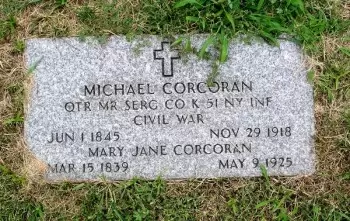
CORCORAN, MICHAEL (1845-1918). Quartermaster sergeant, 51st New York Infantry, Company K. Born in New York, he enlisted as a private on September 27, 1861, at New York City, and mustered into the 51st New York Infantry on October 9. He re-enlisted on December 1, 1863, was promoted to quartermaster sergeant on March 6, 1865, and served until he mustered out on July 25, 1865, at Alexandria, Virginia. He applied for and was granted a pension in 1890, certificate 667,995. His last residence was at 221 Clermont Avenue, Brooklyn. Mary Jane Corcoran, who is interred with him, applied for and was granted a widow’s pension in 1919, certificate 870,765. Section 15, lot 17263, grave 1444.
COREY, CLARK M. (1839-1924). Corporal, 3rd Rhode Island Heavy Artillery, Company M. After enlisting at Providence, Rhode Island, as a corporal on December 30, 1861, Corey, a native of Canada, mustered into the 3rd Rhode Island on March 17, 1862. He was listed as sick and absent on May 15, 1862, at the General Hospital at Hilton Head, South Carolina. According to his obituary in the Brooklyn Daily Eagle, he shot down a Confederate flag at Fort Sumter, South Carolina (likely in 1864, given the history of the 3rd Rhode Island) and was awarded a chevron for that action. Corey was on a furlough for 30 days as of October 15, 1864, and was discharged on March 27, 1865.
A croquet enthusiast, Corey belonged to the Prospect Park Croquet Club and made mallets for the members of the team. He is likely the Corey M. Clark who is identified as a contractor in the Brooklyn Directory for 1873-1876. In the lighterage business, he owned a firm, Corey & Bishop. The Brooklyn Directory for 1888-1890 lists him as a lighter, a handler of cargo from ships to port. He was listed as a ballast master, a port officer who determined where ballast, the heavy material placed low in a ship to improve its stability, was jettisoned so as not to fill up harbor channels, in the Brooklyn Directory for 1884-1886. The Brooklyn Directory for 1888-1890 lists him as a lighter. The 1890-1892 Brooklyn Directory notes that he was a seaman; during those years, he lived at 264 Carroll Street.
The Veterans Schedule of 1890 confirms his military service. In 1904, his application for a pension was granted, certificate 1,082,715. Listed as living in Brooklyn at the time of the censuses of 1900, 1910, and 1920, he apparently was retired since no occupation was noted. At the time of his death, he lived at 264 Carroll Street in Brooklyn. He left an estate of more than $10,000. Edith Corey applied for and received a widow’s pension in 1924, certificate 953,943. Section 205, lot 30143, grave 2.
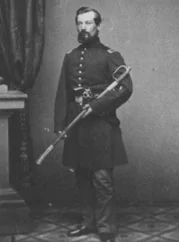
CORLEY, CHRISTOPHER (1817-1889). First lieutenant, 7th Regiment, New York State Militia, Company E. A native of New York City, he was a box manufacturer at the onset of the Civil War. He enlisted at New York City on April 17, 1861, was commissioned into the 7th Regiment on April 26, and mustered out at New York City on June 3 of that year.
At the time of the census of 1870, he was living in Cortlandtown, New York, and was listed as a retired merchant. Corley also owned an iron company at some point according to family records. As per his obituary in the Newburgh Register, he was a very wealthy man who owned the firm, Corley & Co., box manufacturers, and confirmed that he also was in the iron business. That obituary notes that he was married three times, lastly to Mary Rodman, whom he married on March 7, 1888, in Newburgh. Corley was well-known in business circles in New York City and in Peekskill, New York, where he resided for many years.
His obituaries in The New York Times, the New York Herald and the Newburgh Register cited his last residence as 289 Liberty Street in Manhattan; his place of death is unclear, the New York Herald and the New York State Death Record report that he died in Newburgh but the Newburgh Register reported that he died in New York City. His death was attributed to liver trouble and indigestion. As per his obituaries, the funeral took place at his New York residence and a train from the Erie Railroad line would arrive at Chambers Street bringing guests from upstate. Section H, lot 18466.
CORLIES (or CORLISS), JOSEPH H. (1836-1905). Private, 84th New York (14th Brooklyn) Infantry, Company B. Born in Philadelphia, Pennsylvania, he enlisted on May 18, 1861, mustered in five days later on May 23, was wounded on August 29, 1862, at the Battle of Second Bull Run, Virginia, and was discharged for wounds on February 12, 1863, at Washington, D.C. In 1863, his application for an invalid pension was granted. According to the 1870 census, he was employed as a clerk; the 1880 census shows that he worked in a fish store and, as per the 1888-1890 Brooklyn Directory, he was in the milk business. In addition, he was member of the 14th Veterans’ Association and the Freemasons. He last lived in Brooklyn. Caroline M. Corliss applied for and received a widow’s pension in 1905, certificate 604,930. Section 142, lot 24063.
CORNELL, JOHN BLACK (1821-1887). Iron manufacturer. Born in Far Rockaway, he served an apprenticeship in the iron firm of his brother William W. Cornell. In 1847, he founded the iron manufacturing business which developed into the famous J.B. & J.M. Cornell foundry. The first company offices were located at 143 Centre Street in Manhattan, later the site of the Tombs prison, and now the Manhattan Criminal Court. The brothers produced the building materials of 19th century New York, including Central Park’s bridges and railings, the circular stairs and ironwork for the Brooklyn Bridge, and the iron base and stairways for the Statue of Liberty. Over 13,000 tons of Cornell iron could be found in the formerly elevated railroad tracks of the city’s trains. It provided steel and iron work for the Produce Exchange (one of the largest ironwork contracts in New York City), the Havemeyer Building, and the U.S. Trust Building.
Cornell and his brother patented a method of joining metal slats into revolving shutters for store windows and created a metallic surface for fireproof partitions that would support plaster. Both of these inventions made iron buildings more practical. Resistant to fire, iron construction was of interest to the Union Army, which commissioned Cornell to build gun turrets for the Miantonomoh and Amphitrite, Monitor class warships used in the Civil War. The Cornell iron works was one of the largest manufacturing operations in New York City, employing 1,200 at its peak. Aside from his business, Cornell was active in the abolition and temperance movements, as well as the Methodist Episcopal Church. He served as president of both the New York City Church Extension and the Drew Theological Seminary; he also was a trustee of many other benevolent institutions in New York City. Section 73, lot 3416.
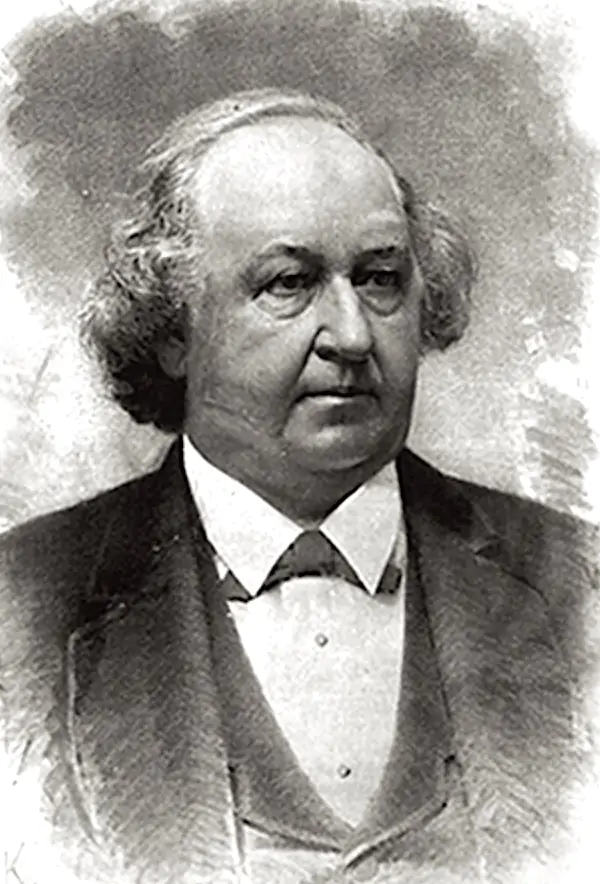
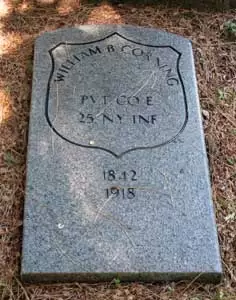
CORNING, JR., WILLIAM BURTIS (1842-1918). Private, 25th New York Infantry, Company E. A native New Yorker whose family’s roots can be traced to 15th century England, his ancestors came to the United States in the 1600s. He enlisted at New York City as a private on May 11, 1861, and mustered into the 25th New York Infantry on June 14. He was wounded on May 27, 1862, at Hanover Court House, Virginia, and at Second Bull Run, Virginia, on August 30, 1862. His name appeared on his regiment’s muster roll in December 1862, as a casualty. Corning mustered out at the United States General Hospital at Washington, D.C., on February 6, 1863. A merchant in upstate New York, he was known as the “grocer of Sparkill.” His last residence was in Newburgh, New York. Section 34, lot 5566.
CORNWELL (or CORNELL), HENRY L. (or S., C.) (1840-1861). Private, 11th New York Infantry, Company G. A native of New York State, Cornwell enlisted at a private at New York City on April 20, 1861. On May 7, 1861, he mustered into the 11th New York. He was killed on picket duty at Fairfax Road, Virginia, near Alexandria, on May 30, 1861. His mother, Martha Cornell, applied for a pension in January 1863, claiming that she was a widow and that her son, Henry, provided her with his weekly wages of $6 or $7 in support. Her request was granted, certificate number 6,025. Section A, lot 8998, grave 65.
CORNWELL, JAMES H. (1820-1883). First lieutenant and quartermaster, 158th New York. Brooklyn-born, Cornwell was a cabinetmaker in 1843 at 134 Fulton Street who sold mahogany furniture and coffins from his shop according to an advertisement in the Brooklyn Daily Eagle. He enlisted at Brooklyn as a first lieutenant on July 24, 1862, at age 41, and was immediately commissioned into the Field and Staff as a first lieutenant and quartermaster. The muster roll states that he was 5′ 5″ tall with gray hair, blue eyes and confirms his occupation as cabinet maker. However, the census of 1860 and the 1857-1862 Brooklyn Directory identify him as employed as a “police justice.”
In a letter to Walt Whitman on May 12, 1863, from his brother Thomas Jefferson Whitman, mention was made that Cornwell sent $50 to his brother, Andrew Whitman, requesting that he come to Suffolk (a port near New Berne), a trip that he never made. (The money was to be given to Cornwell’s wife in that event.) At that time, Cornwell was in charge of building the fortifications at New Berne, North Carolina. Cornwell was detached to recruiting duty in December 1863. He was discharged for disability on December 20, 1864, effective as per Special Order 19-35 dated January 14, 1865.
The Brooklyn Directory for 1868 lists him as a justice at City Hall; at that time, he lived at 40 Clermont Avenue. The 1870 census cites that Cornwell was a lawyer living in Brooklyn whose real estate was valued at $10,000; at some point in the 1870s, he was a Supreme Court Justice in Brooklyn. By 1880, the census shows that he still working as a lawyer but living in Riverhead, New York. He last lived in Jamesport, Long Island. Section 83, lot 1283.
CORNWELL, RICHARD PRAY (1840-1905). Sergeant, 13th Regiment, New York State National Guard, Company B. A native Brooklynite, he enlisted there on May 28, 1862, mustered into the 13th New York the same day, and mustered out after three months on September 12 at Brooklyn. His last residence was at 554 West 55th Street in Manhattan. Section 55, lot 15653, grave 13.
CORNWELL (or COMWELL), SYLVESTER (1838-1871). Private, 84th New York (14th Brooklyn) Infantry, Company A; Veteran Reserve Corps. A New Jersey native, Cornwell was a hatter at the onset of the Civil War. After enlisting as a private at Brooklyn on April 18, 1861, he mustered into the 14th Brooklyn on May 23. He was wounded at the Battle of Second Bull Run, Virginia, on August 28, 1862, and transferred into the Veteran Reserve Corps on July 1, 1865. According to the census of 1870, he was still employed as a hatter and lived in Newark, New Jersey. His last residence was in Newark, New Jersey. Section 84, lot 6133.
CORRIGAN (or HORIGAN), WILLIAM (1839-1910). Corporal, 14th Independent Battery, New York Light Artillery; sergeant, 1st New York Light Artillery, Company G. A native of Ireland, Corrigan immigrated to the United States in 1853. He was 5′ 8″ tall with brown eyes, light hair and fair complexion. A bricklayer at the time of his enlistment as a corporal on October 29, 1861, he mustered into the 14th Battery of the New York Light Artillery that day where he was borne on the rolls as William Horigan. He re-enlisted on December 13, 1863, and was transferred into the 1st New York Light Artillery at some point where he rose to sergeant on April 14, 1864. According to his pension record, he also served in Company A of the 2nd Battalion, New York Light Artillery, but the dates of that service are not known.
According to the 1870 census, and the Brooklyn Directories for 1873-1876 and 1880-1882, he was a brick mason. As per the census of 1880, he was employed as a stone-cutter. As per the Brooklyn Directory for 1888-1890, he was listed as a mason, carpenter, and builder. In 1899, he applied for and received an invalid pension, certificate 1,022,973. The census of 1900 shows that he was a builder; in 1910, he was a building inspector. Margaret Corrigan, who is interred with him, applied for and received a widow’s pension in 1910, certificate 704,970. Section 141, lot 24196, grave 3.
